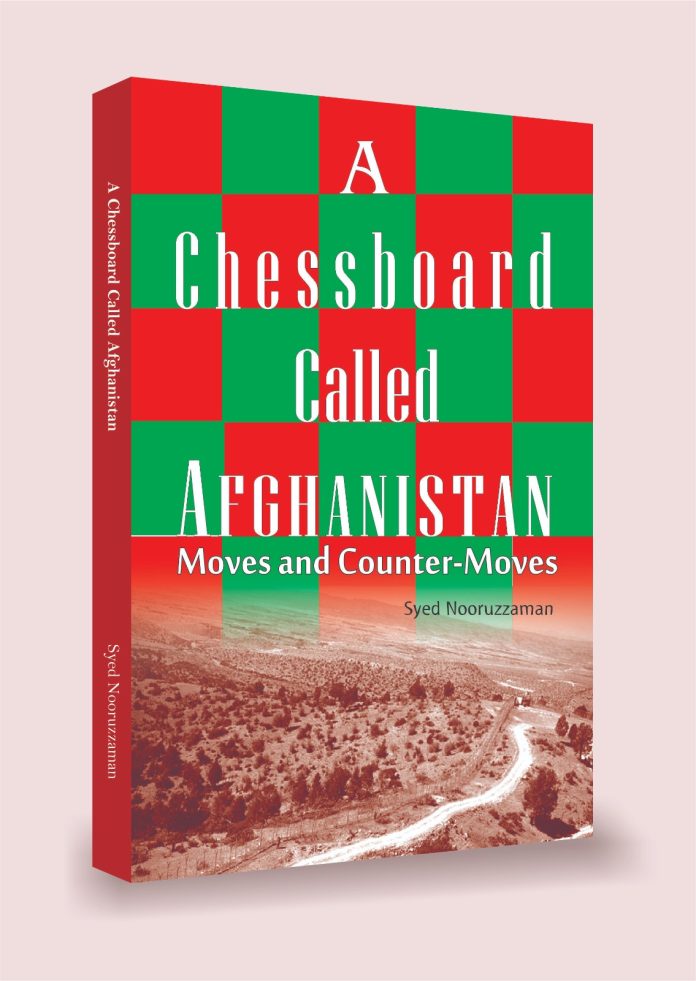Title: A Chessboard Called Afghanistan: Moves and Counter-Moves
Author: Syed Noouzzaman
Number of pages: 81
Price: Rs. 250
Published: 2023
Reviewed by Firasha Shaikh
A Chessboard Called Afghanistan: Moves and Counter-Moves is an anthology of articles published in The Tribune and Tehelka over a period of eighteen years from 2003 to 2021. The writer is a journalist with over five decades of experience in writing on foreign affairs including nearly 31 years as an editorial writer at The Tribune.
This is a quick and simple read which gives the reader a comprehensive overview of the unfolding of the post-9/11 scenario in Afghanistan over a period of two decades. The writer presents the geopolitical contingencies of each era with remarkable clarity and in a manner that can be easily understood by the everyday reader.
The columns chart the waxing and waning fortunes of the US-backed Afghanistan government, their tussle with the Taliban, the Taliban’s demands, and the United States’ role in the midst of it all. In a few of the columns, the author also touches on the geopolitics of neighbouring nations like Pakistan, India, China, and others and their intertwined role. The author has meticulously documented India’s diplomatic and humanitarian contributions towards Afghanistan throughout the years.
Another commendable aspect of the book is the author’s moving portrayal of the Afghan people and reiterating their concerns as they are caught in the crosshairs of the 21st-century Great Game. In the context of the newly-elected government in 2009, he writes, “The masses will be the ultimate sufferers, but who bothers about their interests once the elections are over?” This is praiseworthy as it is not often that common people and their concerns are afforded attention in coverage of geopolitical conflicts.
The author explores various issues faced by Afghanistan throughout this period, such as ethnic tensions in the country, the Afghan government’s corruption and administrative failures, international agreements like the TAPI pipeline project, the poppy cultivation problem, Pakistan’s role in Afghanistan, the changing strategies of the US, the factors behind the resurgence of extremist groups and much more.
The author also discusses possible solutions to the various crises being faced. For instance, he points out that India’s, and other nations’ involvement in infrastructure projects could help create jobs and thus lessen the acute unemployment crisis in the country.
Critique
For all its positive aspects, one main critique of the book would be that the author’s ideas, at some instances, seem to be in line with the American neoconservative position on Afghanistan. For example, in Chapter 15, the author repeatedly emphasizes that the decision of the US to finally withdraw all troops after the Taliban takeover in 2021 is wrong, asking “Can the world feel safe in such a scenario?” (i.e. the Taliban coming to power in the absence of foreign military troops). He goes on to state emphatically that anyone who believes that leaving Afghanistan to be governed by Afghans with no foreign forces remaining is “either not fully aware of the existing reality or is not a well-wisher of the Afghans.”
This line of thinking is problematic as this is precisely the rhetoric that ignited the poorly conceived and disastrous War on Terror in the first place and that is responsible for the quagmire in Afghanistan today. USA’s continued presence after the Taliban takeover would mean very little for the common people and would only result in further hostilities and losses.
With all the information that has since emerged about the USA’s role in Afghanistan, it is increasingly clear that the United States’ fight for Afghanistan was for its own selfish purposes, namely for control over the natural-resources-rich nation and its own expansionist geopolitical interests in the region. After twenty years, not only did the United States’ actions fuel a rise in extremism but left the country impoverished and war-torn. It is easy to label the Taliban as extremists but what is often neglected to be emphasized is the USA’s role in fostering the Taliban in the first place during the Soviet occupation. To the author’s credit, he mentions this in Chapter 11. Similarly, in Chapter 13, the author rightly points out the core motivations for the USA’s interventionism in Afghanistan owing to its enormous reserve of natural resources. In Chapter 14, the author touches on the Taliban’s main objectives being freeing Afghanistan from US military presence and the West-supported Kabul regime.
One only wishes that the author could have taken a more critical approach to the prevalent attitudes in global affairs thinking vis-à-vis the Afghanistan situation, rather than echoing them.
Despite this, the book is a useful contribution to the geopolitics literature for its documentation and analysis and will prove helpful to anyone who wants to get an idea, in retrospect, of Afghanistan’s changing fortunes throughout the years.




